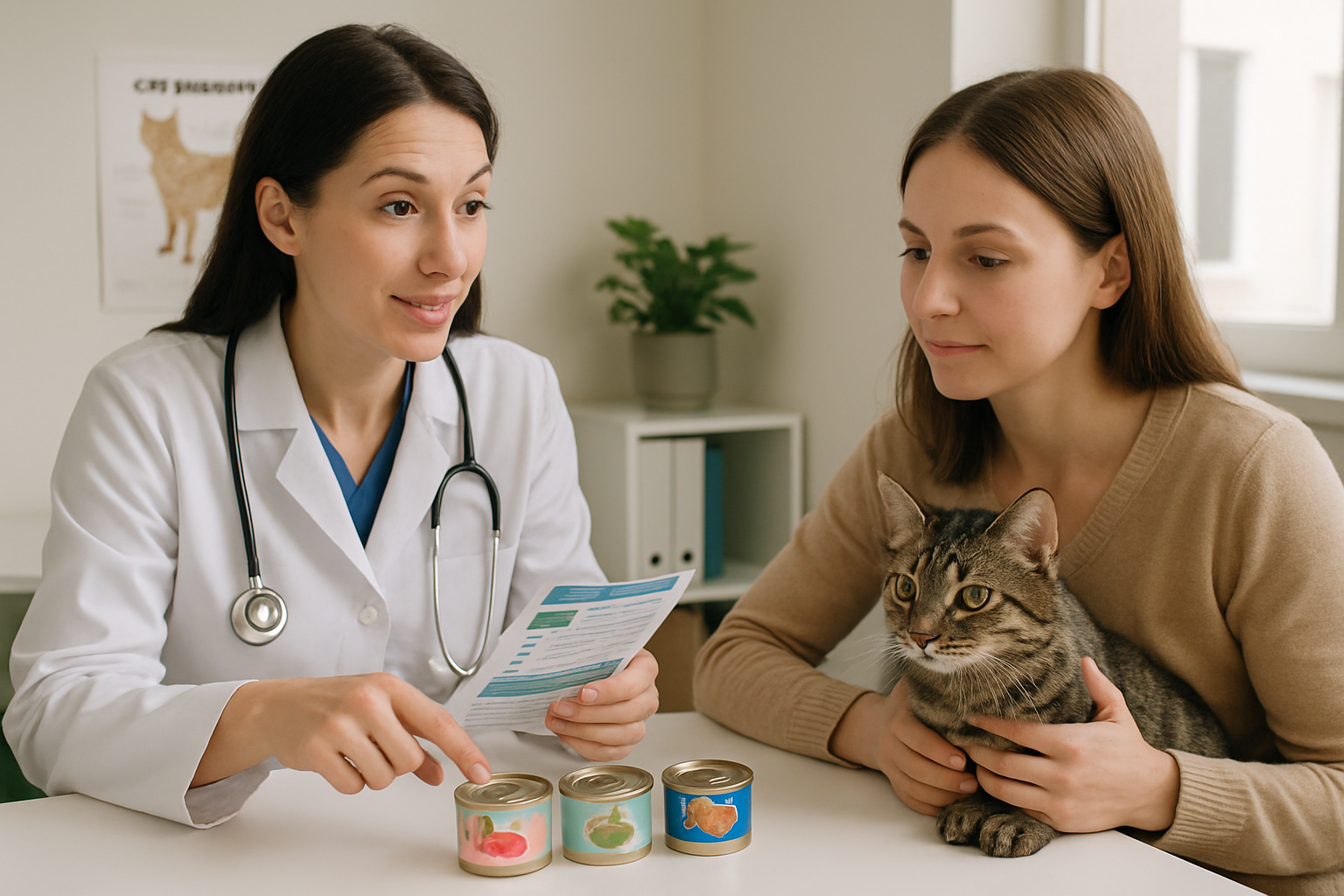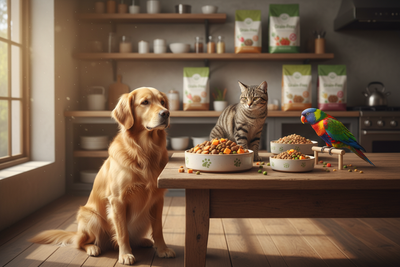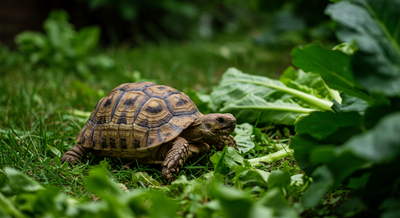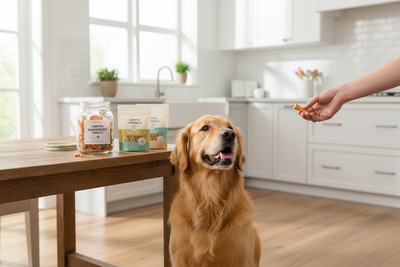Wet cat food is widely recognized as a key element of proper feline nutrition.
But what exactly makes it so beneficial?
This comprehensive guide explores everything you need to know about wet cat food, from its unique advantages to feeding tips and how to select the best brands.
Some wet cat foods are formulated with high moisture content that enhances hydration.
Some are designed with nutrient-packed ingredients suited for different life stages.
Some come in textures and flavors that stimulate even the pickiest eaters.
Some can assist in managing health issues like kidney disease or urinary tract conditions.
Some provide an ideal calorie balance for weight management.
Let's dive right in.
Table of Contents
- What Is Wet Cat Food?
- Benefits of Wet Cat Food
- Feeding Wet Cat Food: How Much and How Often?
- Choosing the Best Wet Cat Food
- Wet vs. Dry Cat Food: Pros and Cons
- Common Mistakes and Pro Tips
- FAQ About Wet Cat Food
- What’s Your Next Step?
What Is Wet Cat Food?
Wet cat food, often called canned cat food, is a type of cat diet characterized by a high moisture content—typically between 68% and 78% water, as compared to just about 10% in dry food.
Its composition usually includes fresh or frozen meats blended with fats, vitamins, minerals, broth, or gravy to create a nutrient-dense, palatable meal that resembles what felines might eat in the wild.
Unlike dry kibble which is cooked at high heat and compressed, wet cat food is sealed in cans or pouches and gently heated to eliminate pathogens while preserving moisture.
Many wet foods aim to emulate whole prey nutrition, including muscles, organs, and bones (in a digestible form), delivering essential amino acids like taurine.
This approach reflects the natural feeding habits of cats, obligate carnivores who rely heavily on animal-based proteins and moisture for optimal health.
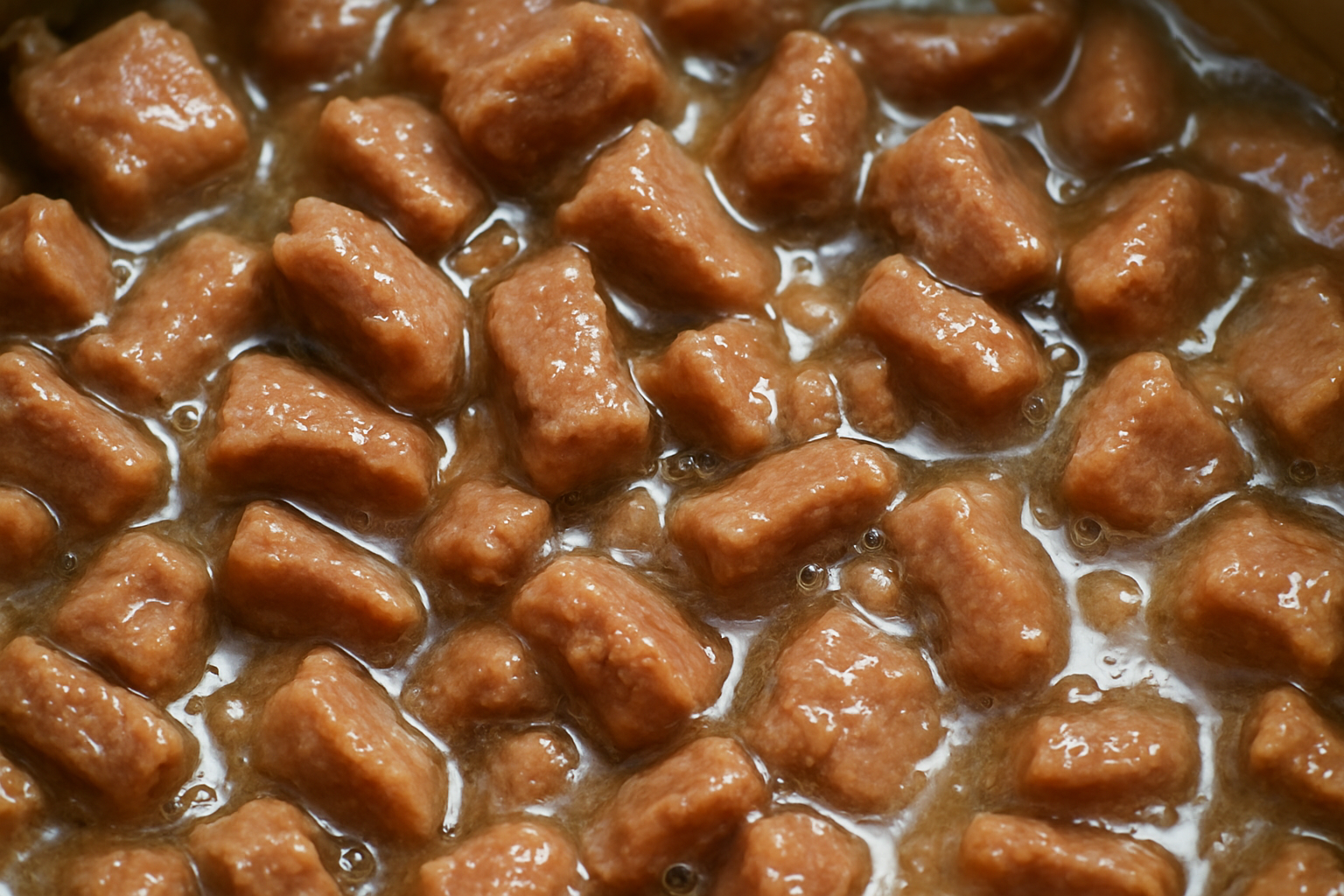
Benefits of Wet Cat Food
Wet cat food offers numerous advantages over other diets, especially for cats that need additional hydration and nutritional support.
High Moisture Content Supports Hydration
One of the most celebrated benefits is the high water content in wet cat food, which helps cats stay hydrated—a critical factor since many cats drink very little water on their own.
Proper hydration aids digestion, nutrient absorption, and kidney and urinary tract health by diluting urine and preventing crystal formation.
Especially for cats with kidney disease, diabetes, or lower urinary tract disease, wet food can be lifesaving by providing much-needed dietary water (source).
Calorie Control and Weight Management
Wet foods tend to have fewer calories per serving compared to dry food due to their water content, which can leave cats feeling fuller with fewer calories.
This is excellent for overweight cats or those requiring calorie restriction.
They can eat a satisfying volume of food and maintain a healthy weight without feeling deprived.
Palatability and Appetite Stimulation
Many cats prefer wet cat food because of its aroma and texture which stimulate the appetite, an important benefit for picky eaters or cats recovering from illness.
Flavors ranging from shredded chunks in gravy to pâté-style create sensory variety that encourages eating.
Support for Dental and Health Issues
Wet cat food’s soft texture is easier for cats with dental disease or missing teeth.
Additionally, it is often lower in carbohydrates, which benefits diabetic cats by maintaining better blood sugar control.
Essential Nutrition and Ingredient Quality
High-quality wet foods provide all essential nutrients for growth, maintenance, and wellness—from animal proteins and fats to vitamins, minerals, and amino acids like taurine.
Brands with transparent ingredient sourcing and research-backed formulations are preferable.
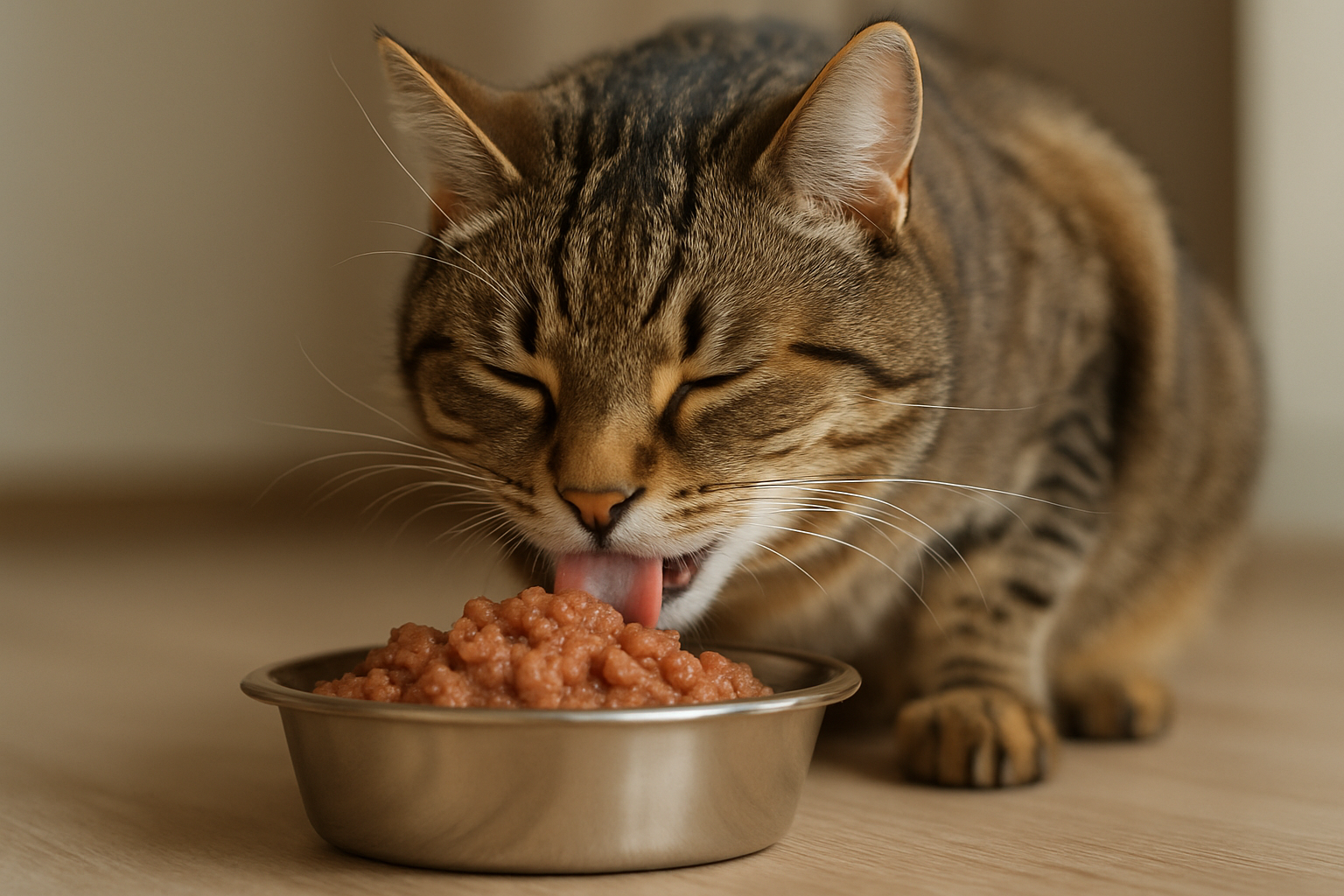
Feeding Wet Cat Food: How Much and How Often?
Determining the right amount of wet cat food depends on your cat’s weight, age, activity level, health, and diet type (wet only or mixed with dry food).
General Feeding Guidelines
Manufacturers often provide feeding charts based on weight—for example, a typical canned wet food with 90 calories per 2.5-ounce can recommends feeding about 3.25 cans daily for a 10-pound cat.
Kittens require more calories per pound, reaching up to 60–65 calories per pound, while adult cats need roughly 20–33 calories per pound per day (source).
Meal Frequency
If your cat eats only wet food, divide their daily portion into 2-3 meals for optimal digestion and satiety.
If supplementing wet food with dry, 1-2 wet meals per day are typical, but always track total calorie intake to avoid overfeeding.
Tailor Feeding to Individual Needs
Consult your veterinarian for personalized feeding plans.
Special cases like kidney disease, obesity, or dental issues may require adjusted portions or veterinary prescription diets.
Rapid dietary changes should be avoided—transition wet food gradually over 1-2 weeks to prevent gastrointestinal upset.
Did you know? Cats naturally eat several small meals daily—studies show feral cats catch 7+ prey items and eat 5 meals per day, making frequent feeding closer to their natural behavior (source).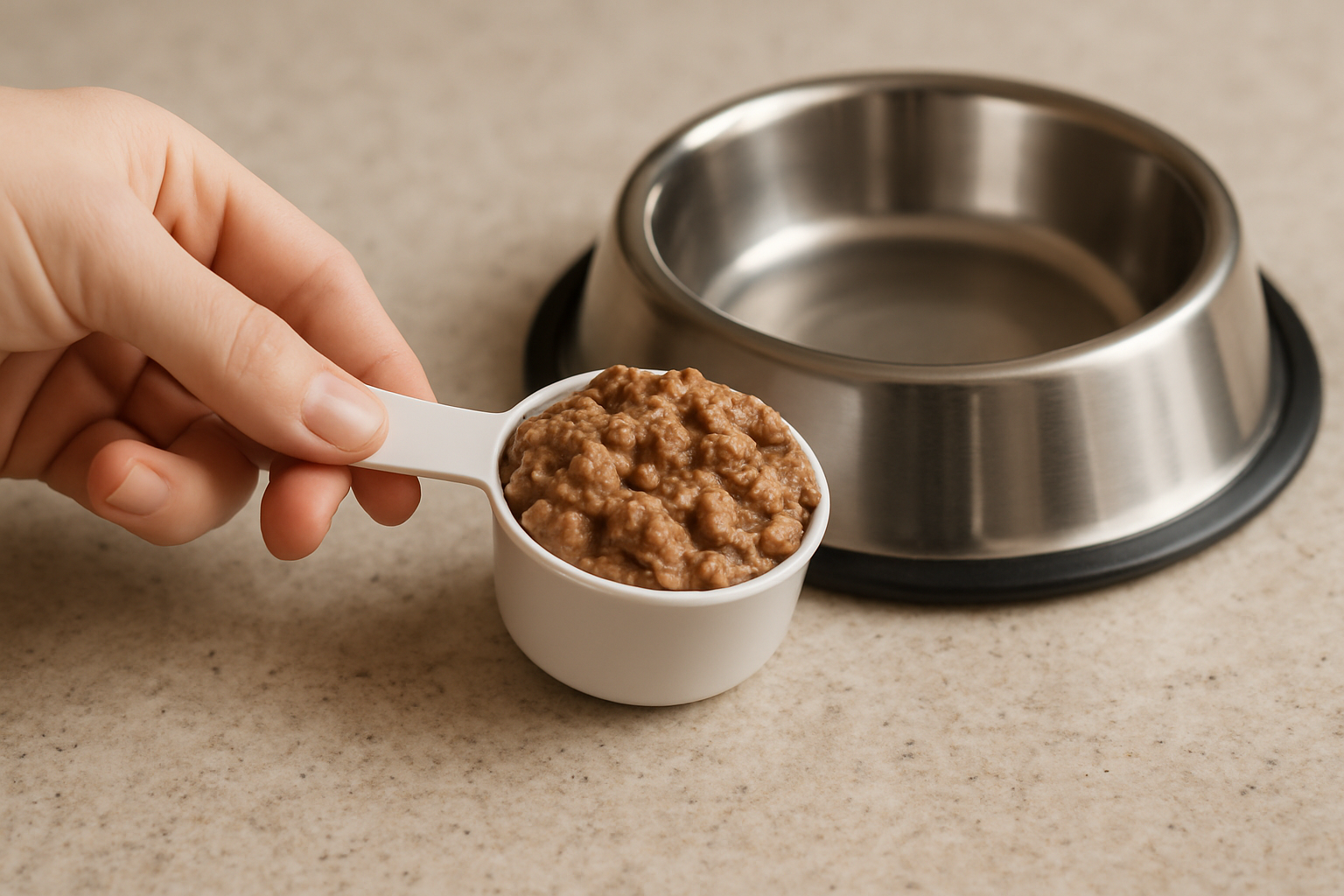
Choosing the Best Wet Cat Food
With countless brands on the market, selecting nutritionally balanced, high-quality wet cat food can be overwhelming.
Look for High-Quality Animal Proteins
Check that meat from named sources like chicken, turkey, lamb, or fish is listed among the top ingredients.
Avoid vague terms like “meat byproducts” or “animal derivatives” which may indicate low-quality or unspecified protein sources.
Avoid Added Sugars and Carbohydrates
Cats are obligate carnivores and have little need for carbohydrates or sugars, which can cause health issues over time.
Beware of fillers such as wheat gluten, corn, soy, tapioca starch, gums, or caramel coloring.
These are often added to improve texture or palatability but can be detrimental (source).
Check for Taurine and Essential Nutrients
Ensure the food provides taurine, an essential amino acid that cats cannot synthesize but need for heart, eye, and overall health.
The Association of American Feed Control Officials (AAFCO) nutritional adequacy statement on packaging confirms the product meets minimum dietary requirements.
Consider Your Cat’s Life Stage and Health
Select formulas suited to kittens, adults, seniors, or those with special needs like kidney disease or urinary issues.
Veterinary diet options can address these conditions but always consult your vet before switching.
Flavor and Texture Preferences Matter
Wet food comes in shredded, chunky, pâté, or mousse styles. Experiment to find what excites your cat’s palate.
Serving food at room temperature or gently warmed releases aroma, enhancing appetite.
Reputable Brands and Transparency
Choose pet food companies that invest in research, quality control, and clear ingredient sourcing.
If you want to dig deeper into choosing cat food, check out our detailed cat food guide.
Wet vs. Dry Cat Food: Pros and Cons
Choosing between wet and dry cat food depends on your cat’s individual needs, preferences, and your lifestyle.
Wet Cat Food Pros
- High moisture supports hydration and urinary tract health.
- Better for weight control due to lower calorie density.
- More palatable, especially for picky or ill cats.
- Soft texture benefits seniors or cats with dental issues.
Wet Cat Food Cons
- Typically more expensive than dry food.
- Short shelf life after opening—must refrigerate and use within 24 hours.
- Can be inconvenient for free feeding or multi-cat households.
Dry Cat Food Pros
- More economical for multiple cats or tight budgets.
- Long shelf life and convenient storage.
- Can contribute to dental health by reducing tartar buildup when combined with dental care.
Dry Cat Food Cons
- Low moisture increases risk of dehydration.
- Higher carbohydrate content can be suboptimal for obligate carnivores.
- Increased risk of obesity if free-fed and portions are not monitored.
A balanced approach can be feeding a mixture of wet and dry food—wet food to provide hydration and nutrition, dry food for convenience and dental support.
Consult your veterinarian to tailor the diet ratio and feeding schedule to your cat’s needs (source).
Common Mistakes and Pro Tips
Feeding wet cat food is not without potential pitfalls, but being informed can make all the difference.
Overfeeding and Weight Gain
Because wet food is flavorful and cats can eat more volume, overfeeding is a risk. Always measure portions and consider total calorie intake including treats.
Not Gradually Transitioning
Sudden diet changes can cause diarrhea or appetite loss. Transition your cat gradually over 7-14 days mixing increasing amounts of the new food.
Poor Storage Practices
Wet food must be refrigerated after opening and discarded if left out over two hours to prevent spoilage and bacterial growth.
Ignoring Ingredient Quality
Choose wet foods with clear, traceable meat sources and no added sugars or unnecessary fillers like wheat gluten or corn, which are not biologically appropriate for cats.
Feeding Just One Texture
Cats may benefit from varied textures and flavors. Experiment with pâté, chunks, and shredded styles to keep meals interesting.
Pro Tip: Supplementing wet food with nutrient-rich whole prey items like quail eggs can boost protein quality and add moisture naturally, supporting health improvements (source).
FAQ About Wet Cat Food
Can I feed my cat wet food exclusively?
Yes, wet food can provide complete nutrition when properly portioned. Ensure the food meets AAFCO standards and consult your vet for specific needs.
How should I store opened wet cat food?
Cover and refrigerate opened cans or pouches immediately and use within 24 hours. Discard any food left out for more than two hours.
Is wet cat food better for kittens?
Kittens benefit from wet kitten formulas rich in protein, calcium, and DHA to support rapid growth. Refer to feeding charts provided on packaging (source).
What textures of wet food do cats prefer?
Preferences vary; common textures include pâté, chunks in gravy, shreds, and mousse. Experiment to find what your cat enjoys.
Can wet food help with dental disease?
Wet food is softer and easier to eat for cats with dental problems or missing teeth, supporting nutrition when dry food poses challenges.
How do I transition my cat to wet food?
Mix small amounts of wet food with current diet gradually over 1-2 weeks, increasing the proportion to prevent digestive upset.
What’s Your Next Step?
Tell us in the comments: How will you apply this to your wet cat food choices? For personalized advice, contact us!
For more in-depth information, visit our detailed cat food guide.
Explore premium wet cat food options like at Talis Us Wet Cat Food and find the perfect match for your furry friend!
Remember, carefully selecting and feeding quality wet cat food enriches your cat's health, happiness, and longevity. Your feline companion deserves the best nutrition that mirrors their natural diet—hydrating, high-protein, and palatable.
